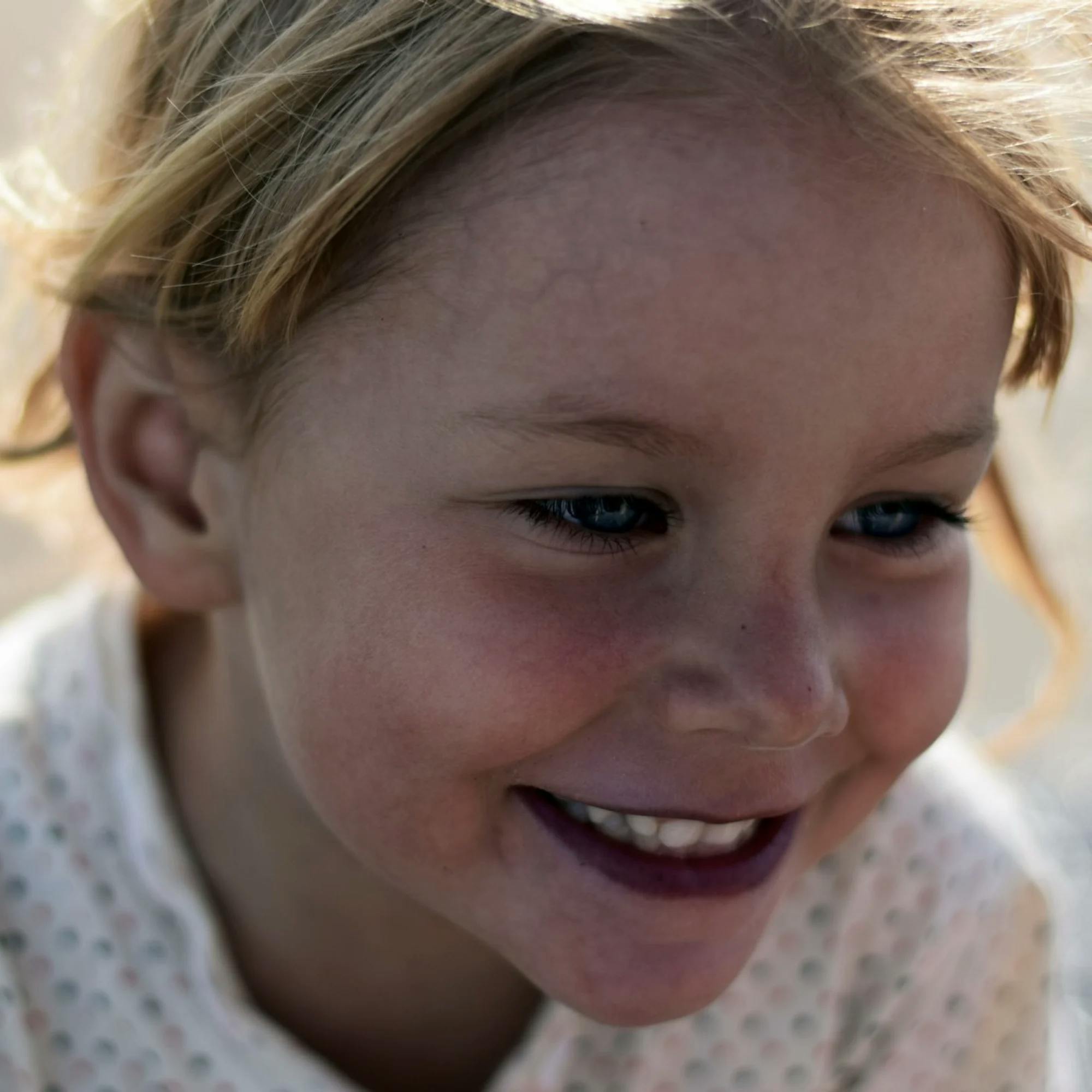Speech and Language Milestones for Birth to 18 Months
In this video, we explain the speech and language milestones to look for in your baby or toddler. Learn the key milestones for these ages at the following timestamps:
0-3 months 1:31 3-6 months 5:07 6-9 months 7:51 9-12 months 11:15 12-16 months 16:42
This video lesson is part of our Small Talk course, created by licensed speech-language pathologists and hosted by Expressable's Chief Clinical Officer Leanne Sherred, M.S., CCC-SLP. Small Talk teaches you simple strategies to help your newborn to 18-month-old learn to communicate. Featuring expert, research-backed tips and techniques, plus demonstrations from a real mom and her toddler.
Video transcript:
Thank you so much for joining me today to discuss the many exciting communication milestones that infants go through from birth to 1 and a half.
The first 18 months of a child’s life are some of the most formative in terms of speech and language acquisition. This is a time when the brain is rapidly developing and maturing. It’s like a sponge, absorbing all the language around them.
While every child develops on their own timeline, the stages of early language development are near universal among humans. A baby’s cries soon turn into cooing and babbling, and their first words follow shortly after. These foundational language skills are essential in building more complex communication that allows children to clearly express their thoughts, feelings, and ideas as they get older.
So what are these essential language milestones? That’s exactly what we’re going to cover in this lesson. As a parent or caregiver concerned about your kiddo’s progress, it’s so important that you understand, observe and monitor these signs of typical development. It can help ensure your child is on track or perhaps indicate they may need extra support.
We’ve also included a helpful list of these milestones you can download from our resource section as well.
Okay, let’s jump in!
Milestones for the first 3 months
From the moment your child is born, and in their earliest days of infancy, so many incredible speech and language milestones begin to take root.
At this age, it’s likely that your baby will begin to exhibit signs of response to their auditory environment. Reacting or being startled by LOUD sounds is exactly what I mean. Do they cry, turn their eyes, shift their eyes in response? Good. Because to use and understand sounds, babies have to be able to hear them. If not, your baby may have a hearing impairment and it’s important you speak with your pediatrician.
This might sound surprising, but another important early and emerging communication skill is crying. And there is a lot of crying in the newborn stage - as if that’s news to you! Babies have no other way to let their parents or caregivers know what they need. Over time, you may even begin to notice that your baby has specific cries for certain needs, like hunger, diaper changes, or tiredness.
So next time you're sleep deprived or annoyed or frustrated by all this crying, try to remember: At least they’re growing their communication skills - right?
As you do experience the inevitable tears of your little one, one thing you can look forward to is your baby’s ability to calm down in response to a familiar voice. This is another great example of babies responding to their environment - but this time, they’re responding to you! The next time you see your baby quiet or calm to your voice, you should feel extremely proud.
As infants begin to stay awake for longer periods of time and become more alert, you’ll begin to see your baby master some of the more exciting milestones in this stage. One of these memorable milestones is cooing. Cooing is made up of the soft happy sounds your infant makes that often sound like a string of vowels. It might sound like this.
As your baby begins to coo, take the time to react to what they are trying to say to you. You can model various types of sounds and vocal play for your baby to eventually imitate once they get a little older. Vocalizing to your baby also shows them just how fun talking back and forth can be! And this frequent talking and singing to your baby will encourage them to vocalize more and more!
Finally, one of the most highly anticipated milestones that should happen within the first 3 months of life is your baby’s first smile. I mean, come on, what could melt our hearts more than seeing those cute little cheeks dimple?
Within the first couple weeks, you may notice that your baby smiles in their sleep. This is more of a reflex smile. However, as your child gets closer to the 2-3 month mark, they are anticipated to develop what’s called a social smile. This is when your child smiles in response to someone or something in their environment.
So start singing songs, clapping, making silly faces - and get those cameras ready! You never know when that first smile will happen. It’s a moment you will remember forever!
Milestones for 3-6 months
As an infant reaches the 3-6 month stage, you are likely to hear them start getting very vocal! Squeals and variation of pitch are just some of the types of sounds you may hear.
As your baby’s coordination skills improve, you may begin to hear some occasional consonant sounds in their babbling! These are sounds like “Ma!” or “Ba!” Early consonant production typically happens closer to the 6 month mark, and it’s a great sign that your infant’s speech and language development is on track!
Another emerging communication skill is eye gaze. As your child continues to absorb the sights, sounds, and people around them, it’s common for them to shift their eyes, as well as turn their heads, in response to sounds. Again, this may seem like a very basic skill but it’s extremely important. Next time you play with your baby, play some music, or make a silly sound, watch and observe their response!
Speaking of play, playing with your baby daily is a huge piece of successful speech and language development!
In these early months we wouldn't expect a baby to play with toys for their intended purpose. For example, most won't pick up a pretend phone and start making calls. But, there are some early signs of play that you should be looking for. For example, does your child have a general interest in toys? If you shake a rattle do they smile? If you show them a toy that makes sounds, do they stare at it intently or with curiosity? These are all great signs their play skills are developing appropriately. Your baby may even try to mouth toys which is itself a form of play!
And finally, another milestone at this age - and one of my absolute favorites, is laughter. What’s better than a sweet giggle? It’s so fun to discover what makes your child smile and laugh - so ham it up! Interact with them, lightly tickle, make big exaggerated faces, jump up and down. Anything to hear that precious sound of your little one’s laughter.
Milestones for 6-9 months
The 6-9 month stage is most often one that is filled with a ton of language growth! This is such an exciting time for new parents and caregivers.
In this stage your baby will likely begin participating in simple games, like one of my all time favorites, peek-a-boo! When you hide, monitor to see if your child reaches to pull down your hands or blanket, and gives you a big hearty squeal or laugh or smile of excitement once you pop out.
Over time, they may even begin to imitate the game themselves! If you catch your little one hiding like you do for peek-a-boo, there’s a good chance they’re communicating “I want to play this game!” Make sure to give into their request! You can say, “Where did you go? I can’t find you!” Chances are they will pop out just like you do!
At this point you may be wondering: so how do simple games like this actually correlate to language growth? Well, games and play involve two people interacting back and forth, just like communication does. Play mimics communication in this way. Not only is it fun, but it strengthens your child’s speech and language development!
Speaking of interaction skills, waving is another special milestone that typically emerges in this age range. When your child begins to hear the words “bye-bye” or “hi,” they should begin waving to others - just like you do. This is a great skill to practice when out and about, or interacting with new people. Make sure to heap on that excitement and praise once they get waving - it will encourage them to do it more!
And finally, between 6-9 months your baby’s babbling may start sounding a bit more mature. After all, we’re heading closer to your baby's first words! The “ma” your baby used to say begins to turn into longer strings, such as “mamama.” Make sure to encourage your child to babble more by responding to their sounds. You can say the same consonants they say, or even give them some new consonants to try! Try simple sounds like, “bababa” or “dadada.”
Milestones for 9-12 months
Generally, as your baby reaches the 9-12 months stage, you will begin to get a peek inside their receptive language skills. This means they’ll start demonstrating an understanding of basic words and phrases
These are phrases like “come here,” or words like “no” and “stop.” Now, this doesn’t mean that your baby will always do what you say? If only! Their choice to do what you ask is on your little one and their growing independence. But the majority of the time your child will likely be able to respond appropriately and follow these simple, 1-step directions.
Another skill you can watch for in your child’s development is called joint attention. Joint attention is when two people are focused on the same task or object together.
You should notice joint attention in simple, everyday activities. Let me explain.
Think about a daily task - like making your baby’s lunch. When preparing their food, take notice of how often you see them get excited and look at you, then the plate, then back at you. This eye gaze between you and the object is a great example of joint attention. They know they are about to eat, and they know that you know they are about to eat, and they want to make sure you give them that food quickly! You’re both focused on the same activity together - bravo!
And finally we get to your kiddo’s expressive language, or verbalizations. It’s common at this age for your baby to be imitating your sounds frequently. When you say different animal sounds, do they repeat “moo” or “ruff ruff” back to you? When you make sounds of cars, do they respond with “vrooooom?” These non-speech sounds are a motivating way for your child to practice their imitation and verbalization skills.
As your child builds momentum towards those first meaningful words, their babbling is expected to grow and contain more consonants and vowels. This is right around the time when they’ll mostly likely start to say their first words - so exciting! The more you and your child practice imitating the production of these sounds, the better prepared they’ll be to start talking!
Milestones for 12-18 months
We’ve made it to the most long-awaited and highly-anticipated milestone - your child’s first words! I mean, come on, is there anything more memorable and exciting to witness? It’s a memory and milestone that’ll stick with you forever.
However, before we dive deeper into this milestone, quick side note. Successful communication looks different for every child. And for some kiddos, like those with more severe neurological conditions or congenital disorders, they may rely on other forms of communication instead of using spoken words to communicate. This could be through sign language, or augmentative and alternative communication (referred to as AAC). These children can absolutely still learn to use language to express themselves, have meaningful interactions, and develop deep personal relationships - their communication ladder just might look a bit different. We'll explore these communication variations in a future course.
Okay, back to first words. For typically developing children, many will first begin to use single words to communicate their wants and needs around 12 months of age, with some children closer to 15 months. And that is perfectly okay!
As your child begins talking and using more words, be listening for the different sounds they produce. A child this age should commonly be able to pronounce the /m/ /n/ /b/ /p/ and /d/ sounds. As their speech and language skills develop, more sounds and consonants will follow.
Words themselves aren’t the only exciting achievement at this age. So is their name! An important comprehension skill you will ordinarily start observing around the 12 month mark is your child’s ability to respond to their name. Even when they’re occupied or distracted by a task, take note of whether they stop what they’re doing, turn their head, and look at you when you call out their name.
It’s also common that your toddler will begin demonstrating the ability to follow routine directions. It's possible for you to assess this by taking note of how consistently and successfully your child follows simple, one-step directions, like, "Sit down," "Come here," or "Give me your cup." This is a great way to gain insight into your child’s language development. And doesn't it feel so good when kiddos do what we ask them to?
And that wraps up our discussion on speech and language milestones for the first year and half of life. Again, it’s worth reinstating that every child develops differently, and just because they’re not hitting these milestones, doesn’t necessarily mean they have a delay or communication disorder.
However, what’s important is that you keep a close eye on their progress and development over time, and speak with your pediatrician or a speech-language pathologist if they’re consistently not meeting age-appropriate milestones. Intervening early with professional help can be essential to ensure your child doesn’t fall behind.
In our next section, we’re going to be discussing some basic strategies that are universally important no matter your child’s age. Think of these as the tools in your parenting toolbox. They’ll help set the foundation for everything that’s to come and, as we dive deeper into individual language-building skills, we’ll regularly use and refer back to these basics.





